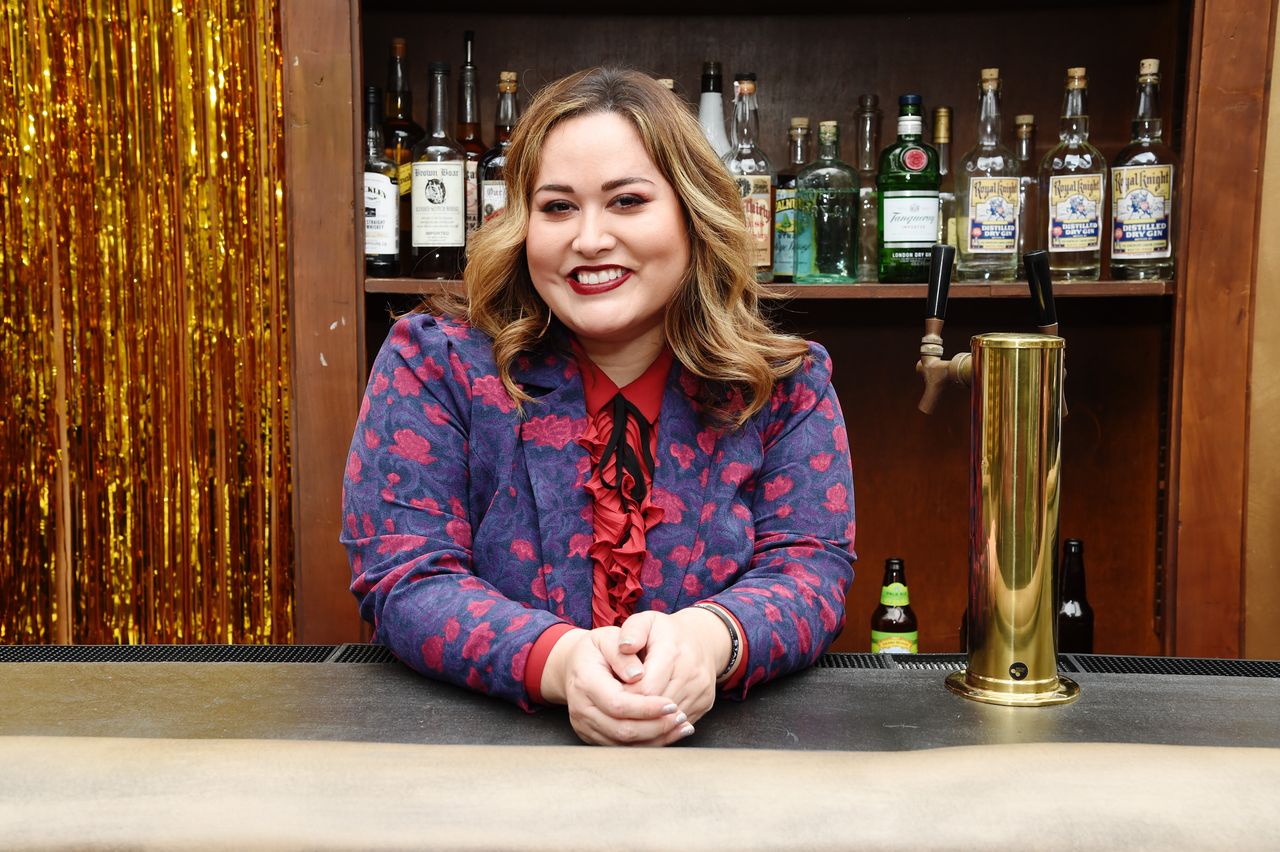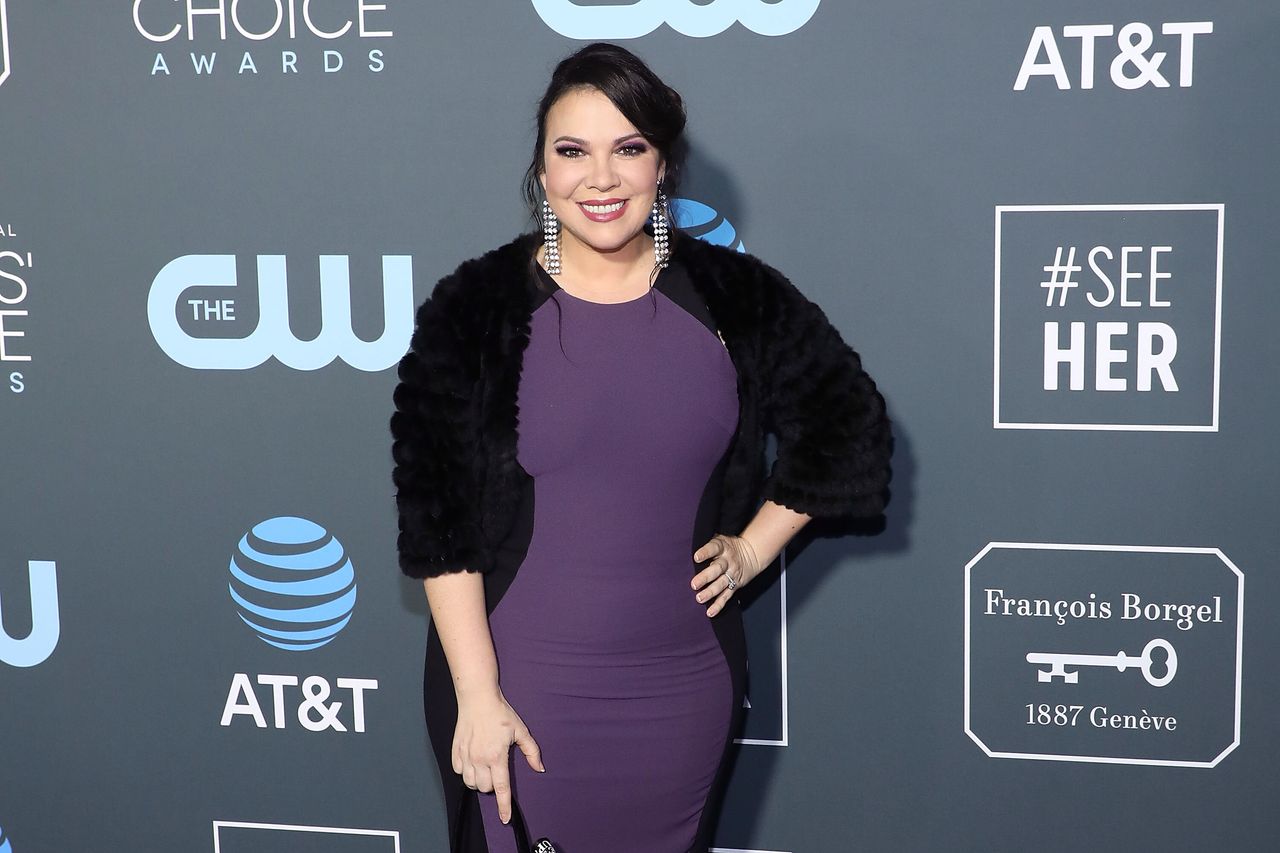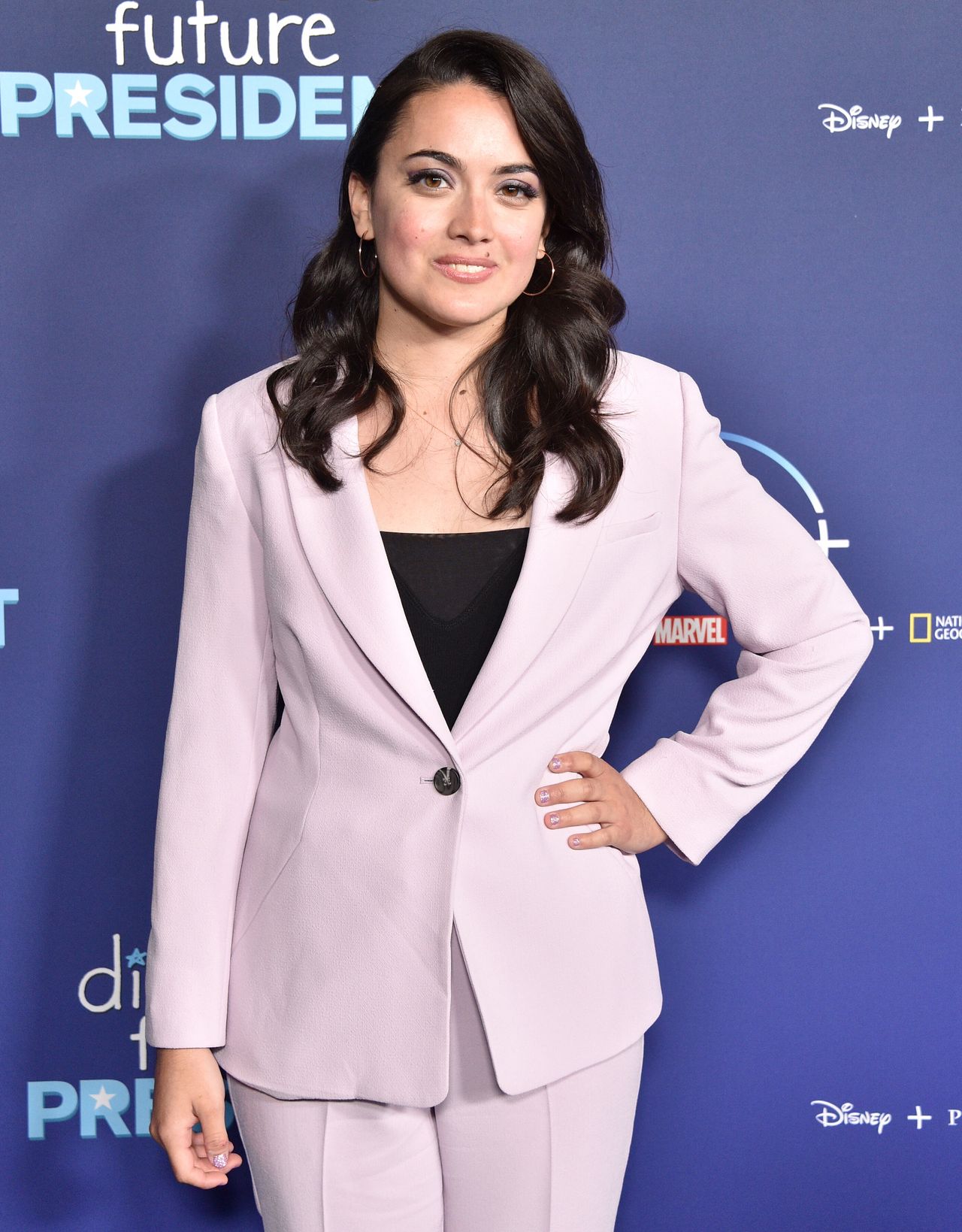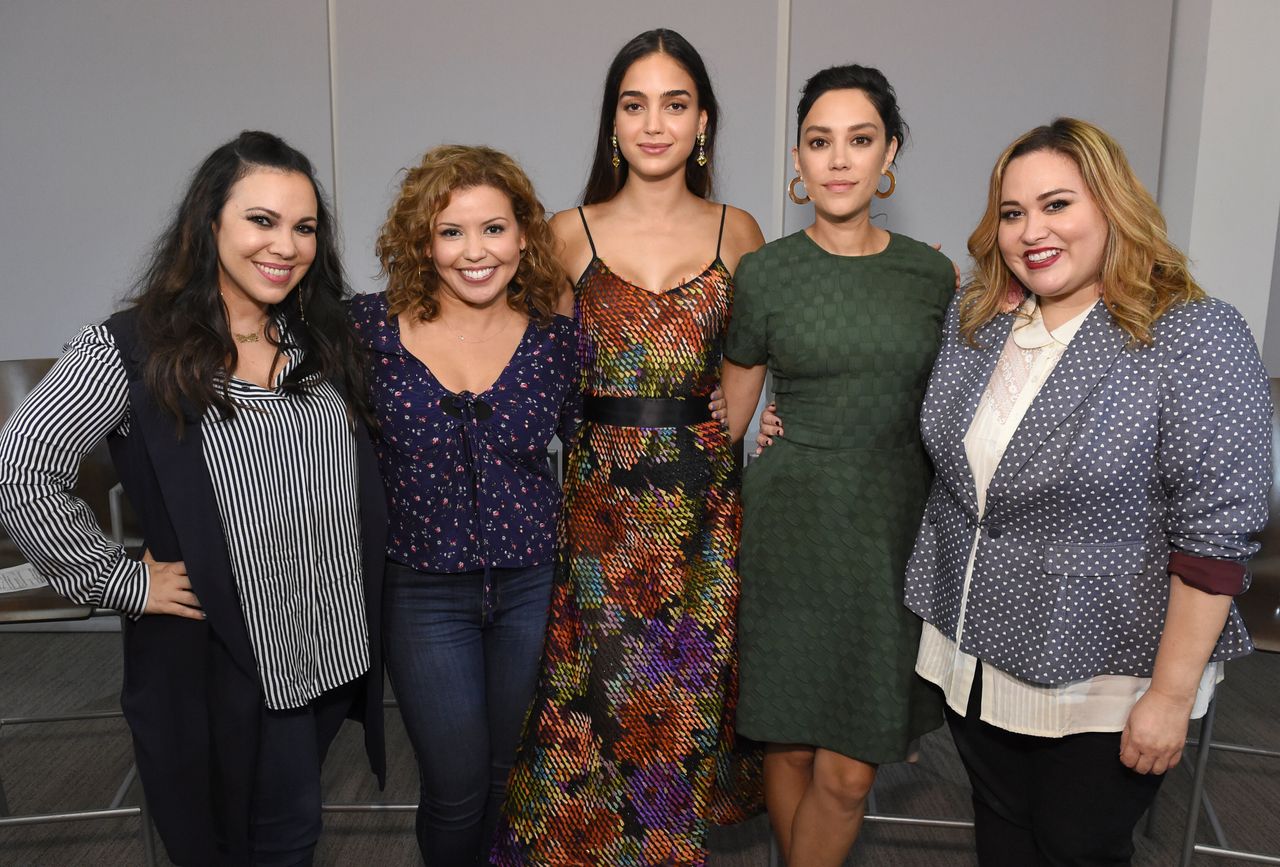“Vida” creator and showrunner Tanya Saracho has been trying to create the roles she didn’t have at the beginning of her career and make it possible for others to do the same.
She had trained in acting in Boston University’s theater program and studied Shakespeare at Oxford. But after college, when she moved to Chicago to start her theater career, the only roles available to her were what she calls “Maria roles”: often maids or prostitutes, with just one line.
“It was like, ’Wait, I’m classically trained for this?!’” she says now. “It was like, ‘Yes, Mr. Johnson.’ Like, that was the line. That was it. And so I would see these same Latinas at the auditions. I would see an Afro-Dominican, and I would see a blond Cuban, and I would see myself. All of us were so different, and yet we were going for the same Maria role. I was writing plays already, so I was like, ‘We have to do something!’”
So Saracho found ways to create work and spaces for herself and other Latinx theater artists, like co-founding an all-Latina theater company, Teatro Luna, where she wrote and directed original plays, and the Alliance of Latinx Theater Artists (ALTA) of Chicago, an organization for building solidarity among Latinx theater artists in Chicago.
In 2012, when she started writing for TV, she found there was the same urgency to create opportunities for herself and other Latinx writers and creators. It’s an all-too-common experience for people who are among “the first” or “only” in their fields: working to build spaces to elevate each other’s work — often out of necessity.
For years, Latinx audiences have been a major source of revenue for Hollywood. Yet their stories make up a disproportionately low portion of what gets told on screen. As a recent study from the University of Southern California’s Annenberg Inclusion Initiative laid out, nearly 20% of the U.S. population identifies as Hispanic/Latino on the census, but just 3.5% of the top 100 grossing films at the U.S. box office from 2007 to 2019 featured Hispanic/Latino leads or co-leads. Only 5% of all speaking characters in those movies were Hispanic/Latino. And when Latinx people do appear on screen, it’s often as side characters and in stereotypical roles like the ones Saracho kept encountering, audition after audition. It’s still exceedingly rare for Latinx artists to get substantive and long-lasting opportunities to tell their stories and see their full selves reflected on screen.
“In every space that I’m in, it’s sort of necessary, which is kind of sad that we have to create it ourselves,” she said. “Not that there aren’t those spaces, but sometimes it’s like they’re created by the dominant culture to check boxes — like, ‘OK, well, we have that for inclusion and diversity. Great.’ But sometimes they’re not effective, or they actually are not giving access. It’s more cosmetic.”

To try to address the lack of access, she launched the Ojalá Ignition Lab this summer, a program in which five Latinx writers will get to workshop their writing in weekly sessions and write a complete pilot script. After the fellows complete the program next spring, she hopes to produce one or more of the pilots through her production company.
When she was first starting out in TV, one of Saracho’s role models was Gloria Calderón Kellett, then a supervising producer on the Lifetime show “Devious Maids,” where Saracho had joined the writing staff. Calderón Kellett was a few years ahead of Saracho, having worked her way up through the industry, most notably as a writer on the first three seasons of “How I Met Your Mother.” Later, she would go on to co-create and be the co-showrunner on Netflix’s “One Day at a Time,” from 2017 to 2020. She’s currently working on her newest show, Amazon’s “With Love,” starring Emeraude Toubia and “Ugly Betty” star Mark Indelicato, which will premiere later this year.
“When I first started, it felt like there can only be one, that we were sort of buying into this idea of white supremacy where we, even in our own community, were like, ‘I guess only one of us gets to make it,’ versus the way that, you know, the sisterhood I feel with so many Latina showrunners, which is: All of us hold each other up. Let’s link arms. That seems way more awesome and strong,” Calderón Kellett said. “Let’s talk about each other’s shows and let’s celebrate those. How much more fun is that? And how much more delightful is that than feeling like we all have to duke it out for one slot. Like, who made those rules? I don’t buy into that.”
She, Saracho and fellow Latinx writers and showrunners have tried to build a sense of community, like being able to share advice about getting their shows off the ground.
“We can just talk about these little things as they come up for our shows, like, ‘Hey, who are the nice casting directors who know how to cast Latinos?’” Calderón Kellett said.

Someone who counts both Calderón Kellett and Saracho as “beacons” is Ilana Peña, creator and showrunner of the Disney+ series “Diary of a Future President,” a show about a Latina teenager who dreams of becoming the president. Peña has been able to turn to them for tips on everything from pitching her show to marketing it. And like them, she also makes paying it forward a big part of her work, trying to support her writers and encouraging them to bring their full selves to the table.
“We’re all full people, you know? We have our enormously complicated lives,” she said. “I want to bring culturally diverse perspectives but also life perspectives that are different. We all had our own middle school experience. We all had our own first crushes. Being us, not just as boxes to check, but as full people, hopefully will move the needle forward toward ubiquity.”
The importance of “valuing everybody’s voice, no matter what their level is, no matter who they are in the room” is something she’s learned from Saracho and Calderón Kellett, as well as from her old bosses, “Crazy Ex-Girlfriend” co-creators Rachel Bloom and Aline Brosh McKenna. Peña started on the show in 2016 as an assistant to Bloom and Brosh McKenna; she was then promoted to writers’ assistant and later became a staff writer. She said she always felt valued and recognized for her talents. As a showrunner now, Peña has tried to build the same kind of positive and supportive environment.
“I never felt like any sort of token. My expertise in that room was musical theater, and I was the youngest person in the room, so I would make a lot of millennial jokes,” she said. “It was really special, being on a show that valued me and recognized me for everything I was, not just my background.”

When Calderón Kellett was the co-showrunner of “One Day at a Time,” she says it was important that she had white male allies like co-showrunner Mike Royce and the show’s original creator, Norman Lear, who knew when to step aside and give her the space to be a leader.
“People would come up to them and say, ‘Hey, what should I do?’ or, ‘Approve this.’ They’d be like, ‘Don’t ask us. Ask her.’ And then they would ask me, and then they stopped asking them, those men. They would come to me directly, and then I really got to feel what it was like to be the boss,” she said. “It really left me room to grow and then to really take up space in a way that I hadn’t gotten to prior.”
On her shows, Calderón Kellett tells her writing staff that if they are interested in learning how to be a showrunner, they are welcome to sit in on her meetings to see what the job entails.
“They can see how I take notes, how I do cuts, how I communicate with heads of departments. I allow them to see behind the curtain so that it demystifies it for them, so that when they are sitting in that chair, they know what they’re doing because they’ve seen it,” she said. “It’s important to me, so I am very happy to do it. But, gosh, I would love all the white showrunners to do that, to know the importance of that, know how impactful that can be. And the beauty is, when I have worked with white showrunners, you know, Mike Royce now does that. Andy Roth, who I just did ‘With Love,’ my new show, with, only wants to do that now. So it feels good. It feels good to say, ‘Hey, I want to help you guys out. I want this journey to be easier for you.’”
“If you are in this industry and want to be a storyteller and want to service your community, you just got to gear up. Gear up and really get in there, and know that we walk in with a lot more heaviness on our shoulders, and that’s OK. That’s OK. But, you know, let’s hope that it’s not always going to be this way.””
- Gloria Calderón Kellett
Bosses who actively create a supportive work environment and break down hierarchies are still somewhat unusual in Hollywood and need to become the norm, Peña said.
“It’s not just a generous ideal. It’s not just a way to be kind. It actively makes a production and an environment better. It’s good business sense. It’s more productive. You get more out of everybody you’re working with,” she said. “It’s so meaningful to me to listen to everybody because they have ideas that I wouldn’t have, and because that’s kind of how I got my start. So it’s like second nature for me, but it made me realize like, oh, it’s not just like a nice thing to do. It’s like a life hack.”
These are just a few of so many changes that still need to happen in an industry where change has been glacially slow. For years, Latinx creators have been calling that out and trying to make inroads while facing enormous pressure and expectations.
“The unfortunate thing about being the first is you have no room for failure. The pressure for you is, if you fail, then they’ll say, ‘Eh, we tried it.’ I mean, you see that on network TV again and again. With any marginalized group that finally gets a TV show through, if that show is not a hit, it’s five years before there’s another one because the network executives, they don’t think about, like, all the mediocre white shows they make every year and how they get the opportunity to fail,” Calderón Kellett said. “But boy, we don’t. We gotta come out swinging or else, it’s like, ‘Well, we tried that, and nobody watched it.’ So we have to call that out! We have to say: ‘Hey, just FYI: We see what you’re doing!’”
And progress is often extremely incremental and comes in “ebbs and flows,” as Calderón Kellett noted. Case in point: when “Vida,” which aired on Starz from 2018 to 2020, and “One Day at a Time” were on during the same period, “it was feeling like an upswing,” she said. Yet despite receiving a lot of acclaim and celebration, both shows were canceled. She also worries that the pandemic has affected what shows will get made over the next few years.

Saracho recalled how many people in the industry hoped last summer’s racial reckonings would mark a major turning point. But so far, she says, the changes remain “cosmetic.”
“All the conversations just got really heated in the right way, like all the right terminology and all the right instincts of, like, ‘we must include’ and ‘we must give access to,’ she said. “But we’re seeing that that hasn’t completely panned out a year later. A lot of us are trying to hold them accountable for all of those statements that were made.”
For instance, Saracho pointed out that Latinx writers and other writers of color are often asked to “come and give us a take on this white property. So our voices, our actual stories that we want to tell are not necessarily getting told.”
When Latinx creators do get to tell their stories, it’s often still in limited ways. So the goal has to be to keep broadening the kinds of stories and the kinds of people who get to tell those stories.
“We can’t become what we don’t see, and we don’t see enough,” Peña said. “As we all keep rising, we just have to remember the knowledge that our story, while meaningful and exciting to be told, it’s just one in this patchwork of stories. I am hoping that the tide is turning for the better and we can get so many stories out there from all members of the community.”
Until then, they’ll keep building spaces for each other and try to make sure more stories get told. And they’ll keep pushing for change while trying to balance the pressure and emotional labor of being one of “the first” or “only,” something Calderón Kellett says she’s candid about when she mentors younger writers.
“We’ve got to keep the fires burning. So I try to be really honest [and say] like, there’s ebbs and flows. It’s hard. This is not for the faint of heart, and that if you are in this industry and want to be a storyteller and want to service your community, you just got to gear up. Gear up and really get in there, and know that we walk in with a lot more heaviness on our shoulders, and that’s OK. That’s OK,” she said. “But, you know, let’s hope that it’s not always going to be this way.”
Read more of HuffPost’s Latinx Heritage Month content on Estamos Aquí.

